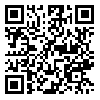1. Zheng WL, Zhu JY, Lu BL. Identifying stable patterns over time for emotion recognition from EEG. IEEE Transactions on Affective Computing. 2019;10(3):417–29. [
DOI]
2. Gross JJ. Handbook of emotion regulation. 2nd ed. New York, NY, US: The Guilford Press; 2014.
3. Fuentes P, Barrós-Loscertales A, Bustamante JC, Rosell P, Costumero V, Ávila C. Individual differences in the behavioral inhibition system are associated with orbitofrontal cortex and precuneus gray matter volume. Cogn Affect Behav Neurosci. 2012;12(3):491–8. [
DOI]
4. Tull MT, Gratz KL, Latzman RD, Kimbrel NA, Lejuez CW. Reinforcement sensitivity theory and emotion regulation difficulties: a multimodal investigation. Personality and Individual Differences. 2010;49:989–94. [
DOI]
5. Gratz KL, Tull MT. Emotion regulation as a mechanism of change in acceptance– and mindfulness-based treatments. In: Assessing mindfulness and acceptance processes in clients: illuminating the theory and practice of change. Oakland, CA, US: Context Press/New Harbinger Publications; 2010. pp: 107–33.
6. Mitchell JT, Kimbrel NA, Hundt NE, Cobb AR, Nelson–Gray RO, Lootens CM. An analysis of reinforcement sensitivity theory and the five–factor model. European Journal of Personality. 2007;21:869–87. [
DOI]
7. Kimbrel NA, Cobb AR, Mitchell JT, Hundt NE, Nelson–Gray RO. Sensitivity to punishment and low maternal care account for the link between bulimic and social anxiety symptomology. Eat Behav. 2008;9(2):210–7. [
DOI]
8. Campbell–Sills L, Liverant GI, Brown TA. Psychometric evaluation of the behavioral inhibition/behavioral activation scales in a large sample of outpatients with anxiety and mood disorders. Psychological Assessment. 2004;16:244–54. [
DOI]
9. Lykken DT. The antisocial personalities. 1st ed. New York: Psychology Press; 1995.
10. Baskin–Sommers AR, Wallace JF, MacCoon DG, Curtin JJ, Newman JP. Clarifying the factors that undermine behavioral inhibition system functioning in psychopathy. Personal Disord. 2010;1(4):203–17. [
DOI]
11. Hoppenbrouwers SS, Neumann CS, Lewis J, Johansson P. A latent variable analysis of the psychopathy checklist–revised and behavioral inhibition system/behavioral activation system factors in North American and Swedish offenders. Personality Disorders: Theory, Research, and Treatment. 2015;6(3):251–60. [
DOI]
12. Barlett JE, Kotrlik J, Higgins C. Organizational research: determining appropriate sample size in survey research. Information Technology, Learning, and Performance Journal. 2001;19(1):43–50.
13. Carver CS, White TL. Behavioral inhibition, behavioral activation, and affective responses to impending reward and punishment: the BIS/BAS Scales. Journal of Personality and Social Psychology. 1994;67(2):319–33. [
DOI]
14. Garnefski N, Kraaij V. The cognitive emotion regulation questionnaire: psychometric features and prospective relationships with depression and anxiety in adults. European Journal of Psychological Assessment. 2007;23(3):141–9. [
DOI]
15. Fallahzadeh H. Estimating sample sizes for binary, ordered categorical, and continuous outcomes in two group comparisons. Tolooe Behdasht. 2010;9(2):105–11. [Persian]
16. Amiri S, Hasani J, Abdollahi MH. The assessment of the personal and impersonal moral judgment according to Behavioral Activation System (BAS) and Behavioral Inhibition System (BIS). Journal of Psychology. 2015;19(1):22–36. [Persian]
17. Besharat MA, Bazazian S. Psychometri properties of the cognitive emotion regulation questionnaire in a sample of Iranian population. Advances in Nursing & Midwifery. 2014;24(84):61–70. [Persian]
18. Campbell-Sills L, Liverant GI, Brown TA. psychometric evaluation of the behavioral inhibition/behavioral activation scales in a large sample of outpatients with anxiety and mood disorders. Psychological Assessment. 2004;16(3):244–54. [
DOI]
19. Jorm AF, Christensen H, Henderson AS, Jacomb PA, Korten AE, Rodgers B. Using the BIS/BAS scales to measure behavioural inhibition and behavioural activation: Factor structure, validity and norms in a large community sample. Personality and Individual Differences. 1999;26(1):49–58. [
DOI]
20. Mohammadi N. The psychometric properties of the Behavioral Inhibition System (BIS) and Behavioral Activation System (BAS) scales among students of Shiraz university. Clinical Psychology and Personality. 2008;6(1):61–8. [Persian] [
Article]
21. Ward A, Lyubomirsky S, Sousa L, Nolen–Hoeksema S. Can't quite commit: rumination and uncertainty. Pers Soc Psychol Bull. 2003;29(1):96–107. [
DOI]
22. Randles D, Flett GL, Nash KA, McGregor ID, Hewitt PL. Dimensions of perfectionism, behavioral inhibition, and rumination. Personality and Individual Differences. 2010;49(2):83–7. [
DOI]
23. Petrini L, Arendt–Nielsen L. Understanding pain catastrophizing: putting pieces together. Front Psychol. 2020;11:603420. [
DOI]
24. Schütze R, Rees C, Smith A, Slater H, O’Sullivan P. Metacognition, perseverative thinking, and pain catastrophizing: a moderated–mediation analysis. Eur J Pain. 2020;24(1):223–33. [
DOI]
25. Stroebe M, Boelen PA, van den Hout M, Stroebe W, Salemink E, van den Bout J. Ruminative coping as avoidance: a reinterpretation of its function in adjustment to bereavement. European Archives of Psychiatry and Clinical Neuroscience. 2007;257(8):462–72. [
DOI]
26. Li Y, Xu Y, Chen Z. Effects of the Behavioral Inhibition System (BIS), Behavioral Activation System (BAS), and emotion regulation on depression: a one–year follow–up study in Chinese adolescents. Psychiatry Res. 2015;230(2):287–93. [
DOI]
27. Gullone E, Hughes EK, King NJ, Tonge B. The normative development of emotion regulation strategy use in children and adolescents: a 2–year follow–up study. J Child Psychol Psychiatry. 2010;51(5):567–74. [
DOI]
28. Martin RC, Dahlen ER. Cognitive emotion regulation in the prediction of depression, anxiety, stress, and anger. Personality and Individual Differences. 2005;39(7):1249–60. [
DOI]
29. Garnefski N, Kraaij V, Spinhoven P. Negative life events, cognitive emotion regulation and emotional problems. Personality and Individual Differences. 2001;30(8):1311–27. [
DOI]
30. Zhu X, Auerbach RP, Yao S, Abela JRZ, Xiao J, Tong X. Psychometric properties of the cognitive emotion regulation questionnaire: Chinese version. Cognition and Emotion. 2008;22(2):288–307. [
DOI]
31. Salehi A. The role of cognitive emotion regulation strategies in the prediction of depression. Knowledge & Research in Applied Psychology. 2017;16(1):108–17. [Persian] [
Article]


 ، جواد ملازاده2
، جواد ملازاده2 

 ، چنگیز رحیمی3
، چنگیز رحیمی3 

 ، حبیب هادیان فرد3
، حبیب هادیان فرد3 





